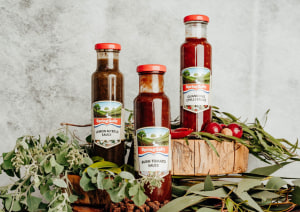The Australian Packaging Covenant Organisation (APCO) has released its National Compostable Packaging Strategy, a comprehensive new approach to how Australia can develop an environmentally sustainable system for compostable packaging.
The report was developed in partnership with the Australasian Bioplastics Association (ABA) and the Australian Organics Recycling Association (AORA).
“With the deadline for the 2025 National Packaging Targets fast approaching, businesses and retailers have shown a growing interest in compostable packaging as a potential solution to their packaging waste,” says APCO CEO Brooke Donnelly.
“Today’s new strategy unpacks the opportunities and risks this presents, and outlines what changes are required to build a sustainable system for compostable packaging that will support Australia to meet the 2025 National Packaging Targets.”
Issues explored by the strategy include how and where compostable packaging should be applied, how it can support the recovery of food waste, and how to ensure compostable packaging is recovered at end-of-life and has beneficial end uses.
It also highlights problematic materials that are being phased-out, including oxo-degradable or fragmentable plastics.
Key challenges for compostable packaging are also outlined, including limited collection and processing facilities, market confusion and misinformation, and the inability of users and organics recyclers to easily identify and distinguish compostable from non-compostable packaging.
The report sets out the systemic changes that are required across the complete packaging lifecycle – including at the design, collection and recycling phases – in order to overcome them.
These include continued innovation to improve the functionality of compostable packaging, and the ongoing national rollout of FOGO services to households, and food collection services to businesses to ensure that these valuable materials can be recovered, rather than lost to landfills.
Investments in packaging design, recovery infrastructure and education are also called out as essential steps to ensure that compostable packaging achieves its potential to generate environmental and commercial benefits.
“Compostable packaging is one of the solutions available to businesses looking to meet the 2025 National Packaging Targets, but we know that it is a market that is causing real confusion, for both industry and end consumers,” explains Donnelly.
“With more and more businesses looking to do the right thing and meet the 2025 Targets, it is critical that they receive accurate and consistent information about compostable packaging.
“We also need to ensure that the critical processes and infrastructure are in place to collect it and process it.
“We are delighted to launch this new strategy today with the two leading industry associations, to set a consistent and comprehensive national approach to compostable packaging that’s both good for business and good for the environment.”
Approximately 11,000 tonnes of packaging placed on the Australian market in 2018-19 was certified compostable plastic or fibre, according to APCO.
The Organisation tracks the volume of compostable packaging placed on the Australian market through its annual Materials Flow Analysis report, Australian Packaging Consumption and Recycling Data 2018-19.
Compostable packaging was also an area of focus in APCO’s 2018/19 Working Groups, established to investigate problematic packaging formats.






